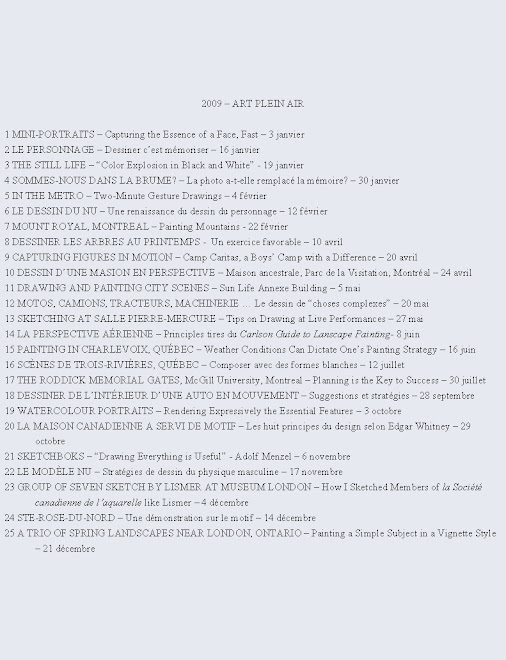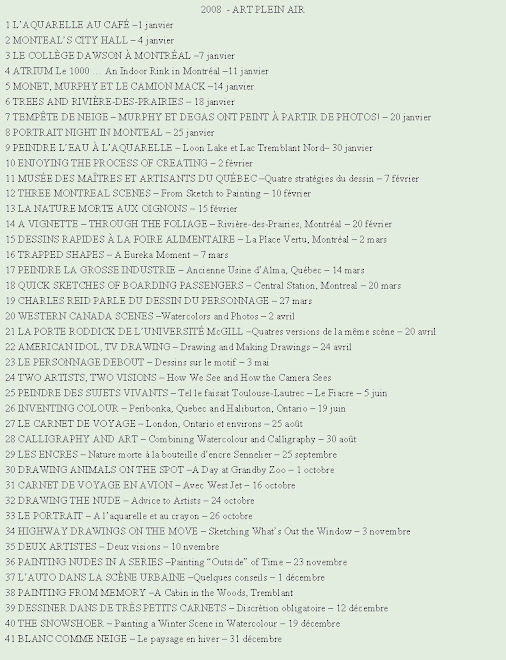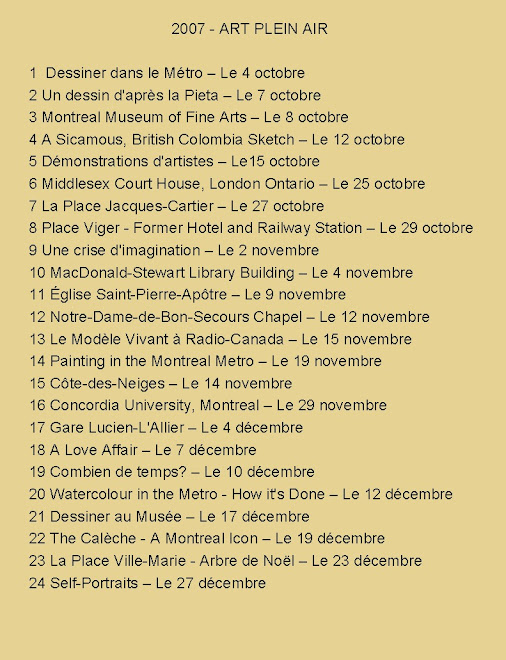“I love things and that’s what I paint. Yet I don’t copy them - a photograph could do that better. Instead I react to them. That is, I try to change what I see and make the pieces fit like the pieces of a jigsaw puzzle.” Charles Reid in the introduction to Painting What You Want to See.
Shapes, shapes and more shapes
Some say drawing people correctly is very difficult but the paradox is that when one stops thinking about drawing people and starts thinking about drawing shapes, then people drawing starts being easier. Probably because we are so used to seeing people, we try to draw what we think we see – a symbol or an example of a generalized person – rather than concentrate on drawing correct shapes.
Setting up to draw in the subway
One day this winter the weather was not conducive to drawing or painting outdoors, so my friend and I decided to set up at subway train stations to draw people and the surroundings. We sat on small folding stools and drew in small sketch books with dry media.
Our objective – learning and having fun
At one train station there is a circular seating area where one can sit and wait. We both sat and sketched at a discrete spot about ten paces away. We were not drawing facial portraits at that distance but rather we were trying to design interesting shapes that looked as close to what was before us. Putting the pencil somewhere near the center of the page we drew one shape after another. After an hour or so, we had accumulated a few drawings, some more finished than others. We did not produce masterpieces but we enjoyed the challenge and we hope this increased our drawing skills. Some of these drawings would be used later as subjects for studio paintings.
It is important to think of a drawing strategy before putting pencil to paper. For example, in drawing the figures that were sitting or standing around the circular bench I tried to visualize dark flat shapes against a light background or light shapes in front of a dark ground. By so doing I reduced the complex shapes to simple flat forms that fit into each other like puzzle pieces. Once I had penciled an outline of the person, I added value or volume by hatching parallel lines on parts of the figure or the entire figure to distinguish one shape from another. Some figures were left simply as contour shapes.
What to do when people move
I must admit that drawing people in public is not that simple especially for the beginner especially if they move. So you might ask: what do you do when the person you are sketching moves or leaves? Well, I usually stop drawing that person and start drawing another person shape elsewhere or draw the surroundings. Then, if the person resumes his original position I complete the missing shapes. If not, I invent what I feel should or could be. As long as the proportions are correct, I remind myself that I am not taking a photo, I am designing. I am creating my own reality.
Adding color and texture and leaving parts unfinished
In some of the sketches you will notice that I added some color and/or created texture by crosshatching dark over light. I also sometimes faded out or left parts of the scene or part of the figure incomplete. This strategy permits the viewer to participate in the drawing by mentally filling in the missing parts. Simplified lines drawn in perspective completed the background and suggested the environment.
Sketching in busy areas
Raynald Murphy sca

















Aucun commentaire:
Enregistrer un commentaire